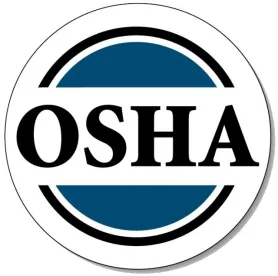Practical Considerations for Combating COVID-19 in the Workplace
The Occupational Safety and Health Administration (“OSHA”) recently released recommendations on policies and procedures employers can implement to prepare and protect the workplace from COVID-19 exposure.
The recommendations vary depending on the risk of occupational exposure. OSHA uses three classifications:
-
Very High Risk and High Risk
OSHA classifies workers at Very High Risk and High Risk only if workers get “exposure to known or suspected sources of COVID-19 during specific medical, post mortem, or laboratory procedures” or if there is a “high potential for expose to know or suspected courses of COVID-19.” These types of workers include healthcare, laboratory, morgue, and medical transport.
-
Medium Risk
OSHA classifies workers at Medium Risk if they have contact with the general public in areas with ongoing community transmission.
-
Low Risk
OSHA classifies workers at Lower Risk if they are not required to be in contact with suspected or known COVID-19 cases.
A large portion of workers fall within the Low Risk and Medium Risk population. These populations take the least drastic of precautions to protect the workplace. Below is a summary of the recommendations OSHA has provided to Lower Risk and Medium Risk workers to limit the spread of COVID-19. Notably, these are currently recommendation that may provide valuable guidance, and not mandates.
Administrative Controls
Employers are encouraged to take the following administrative actions:
-
Stay informed on public health officials recommendations on COVID-19;
-
Encourage sick employees or employees with sick family members to stay home;
-
Create sick leave policies consistent with public health guidance;
-
Consider flexible worksites and flexible workhours such as staggered shifts to minimize the number of workers present;
-
Develop policies and procedures that promote good hygiene (i.e., hand washing, respiratory etiquette, regular housekeeping and cleaning);
-
Discourage non-essential travel; and
-
Create policies for when workers are experiencing symptoms:
-
Designated areas for sick employees to go to;
-
Isolating suspected cases from confirmed cases;
-
Providing potentially infected people with facemasks and other protective gear.
-
Personal Protective Equipment
The use of personal protective equipment (PPE), including “gloves, googles, face shields, face masks, and respiratory protection”, can help minimize the spread of the virus. However, PPE is not recommended for all workers at this time. Instead, OSHA recommends PPE be “selected based upon the hazard to the worker” and used as appropriate. If PPE is used, the equipment should be fitted to the worker, properly worn, regularly inspected, and properly cleaned and stored.
OSHA currently does not recommend Lower Risk workers use PPE not ordinarily used in their line of work. However, Medium Risk workers may require some level of PPE, but will vary on the individual worker’s “work task, the results of the employer’s hazard assessment, and the types of exposures workers have on the job.”




 />i
/>i

